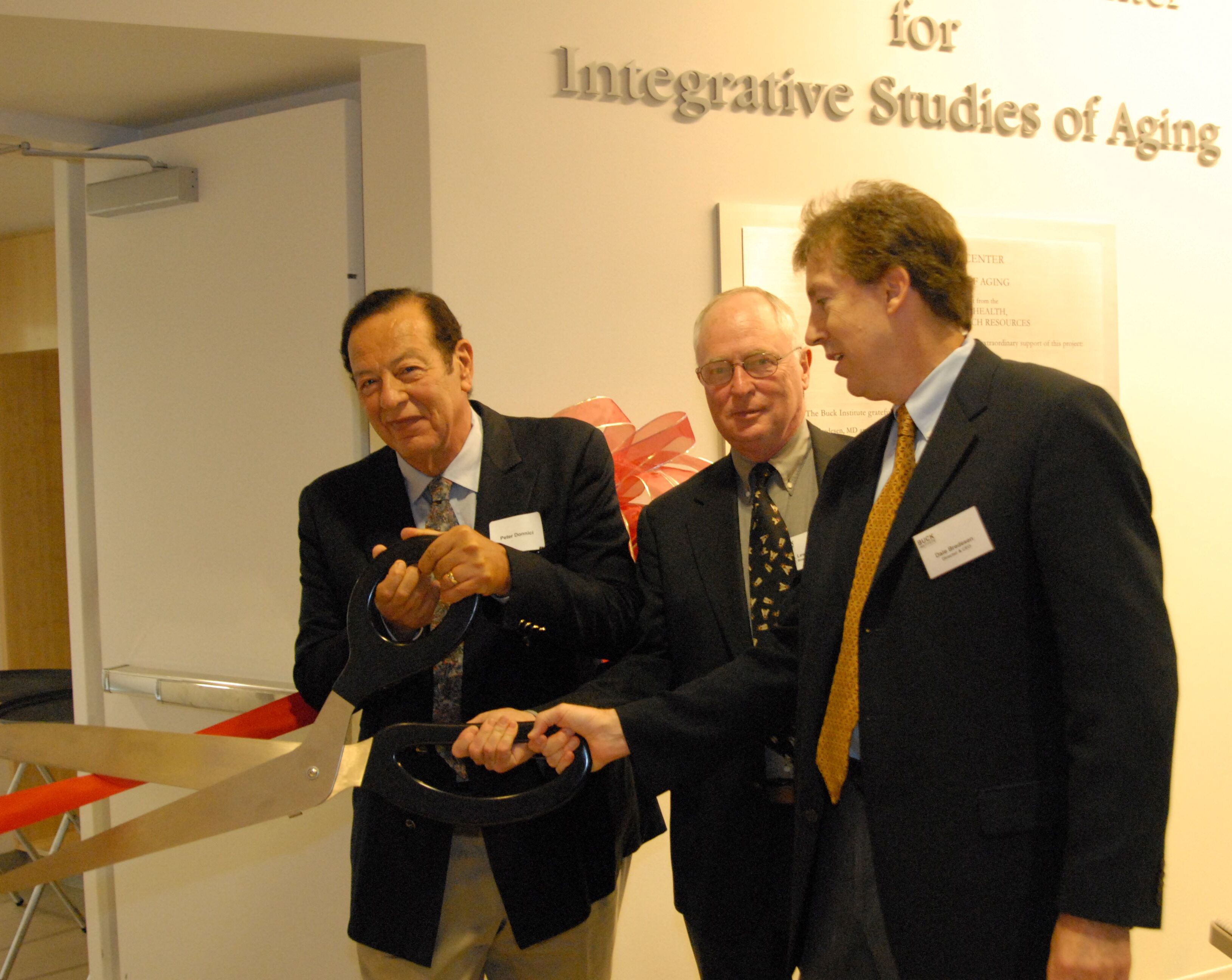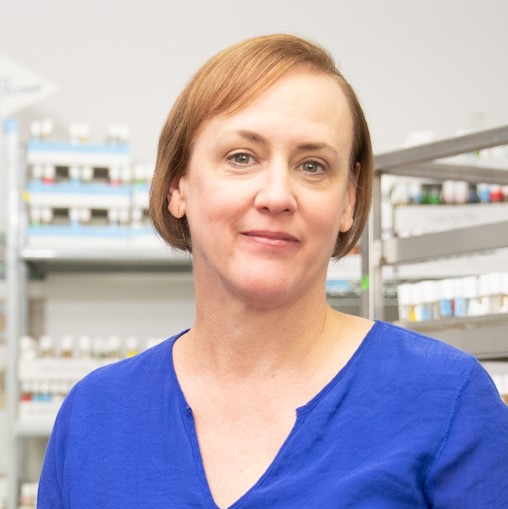The Buck Institute & the Larry L. Hillblom Foundation: Making Dreams Possible
A small foundation has a huge impact
Buck research scientist Manish Chamoli, PhD, recently published results introducing a molecule that can extend the lifespan of tiny worms frequently used in aging research. Furthermore, he showed that the molecule boosts the function of muscle and brain in mammalian cells and shows promise in reducing neurodegeneration.
Published in Nature Aging, the work demonstrated how the process of mitophagy, which removes and recycles damaged mitochondria in multicellular organisms, could keep mitochondria – the powerhouses of cells - healthy and prolong lifespan.
Chamoli, who came to the Buck as a postdoc and is now a senior research scientist, credits support from the Larry L. Hillblom Foundation for helping him become one of the Buck’s most productive young scientists. The unrestricted Hillblom grant funded him as a Hillblom Fellow from 2017-2020, allowing him to pursue the ideas he had when he first arrived at the institute.
 “Clearly funding from the Hillblom Foundation opened up a lot of avenues,” Chamoli says, “Their support allowed me to network with scientists from a range of other disciplines and I’ve been able to work on multiple projects.” Chamoli has co-authored 27 publications while at the Buck including a co-second author credit on a paper about taurine deficiency as driver of aging which published in the prestigious journal Science. His initial work, which was based on cellular quality control, has expanded to include diabetes and various forms of neurodegeneration. Personally, Chamoli is most appreciative of opportunities to interact with Ana-Maria Cuervo, MD, PhD, who is an internationally recognized expert in autophagy and leads the Buck’s Scientific Advisory Board. “She has become a valued mentor,” he said. “Her letter of recommendation was instrumental in my successful application for a green card.”
“Clearly funding from the Hillblom Foundation opened up a lot of avenues,” Chamoli says, “Their support allowed me to network with scientists from a range of other disciplines and I’ve been able to work on multiple projects.” Chamoli has co-authored 27 publications while at the Buck including a co-second author credit on a paper about taurine deficiency as driver of aging which published in the prestigious journal Science. His initial work, which was based on cellular quality control, has expanded to include diabetes and various forms of neurodegeneration. Personally, Chamoli is most appreciative of opportunities to interact with Ana-Maria Cuervo, MD, PhD, who is an internationally recognized expert in autophagy and leads the Buck’s Scientific Advisory Board. “She has become a valued mentor,” he said. “Her letter of recommendation was instrumental in my successful application for a green card.”

The Hillblom Center for Integrative Studies on Aging, which opened in 2007, houses four Buck labs.
The Hillblom Foundation has donated more than $8.4 million to the Buck. The Hillblom Center for Integrative Studies on Aging, which opened in 2007, houses four Buck labs. “The Foundation has been pleased and proud to join with and support the Buck Institute in its excellent research on aging and age-related diseases,” said Foundation President and CEO Peter Donnici. “It has been very rewarding to help many young scientists achieve their goals.”
The foundation is named after Larry L. Hillblom, a co-founder of shipping giant DHL Express. Donnici, Hillblom’s close friend and attorney, was instrumental in establishing the foundation after Hillblom died in a plane crash in 1995. The foundation supports research in California that explores diabetes and diseases of aging. “I think limiting the scope of our funding has paid off in regard to the impact we’re able to have on research,” said Donnici.
Gordon Lithgow, PhD, Vice President, Academic Affairs and Professor, who was a senior co-author of the Nature Aging publication, was recently at an annual meeting of the foundation, where he contemplated the rich history and achievements that the Buck Institute and the Hillblom Foundation have shared over the years.
“I was struck by the myriads of ways that Hillblom made Manish’s work happen,” says Lithgow. “They built the center and gave us lab space to exist in, then gave him a fellowship for three years to do all this great work, and also gave us the infrastructure to support him and the creative ideas that he had.”
Cha moli’s recent work began in the Andersen lab. “We had this nice result but no way to move it forward until we tapped into the Hillblom Center funds and Manish obtained the prestigious Hillblom Fellowship, then we were off and running,” says Professor Julie Andersen, PhD, also a senior co-author of the recent publication. The idea was that if damaged mitochondria could be dealt with more quickly, there might be a health benefit. Through the process of screening for enhancers of mitophagy, identifying a small drug-like molecule (called MIC for mitophagy-inducing compound), and characterizing MIC to find that it enhances mitophagy by inhibiting a nuclear hormone receptor critical to regulating bile acids and lipid metabolism in the gut, the work uncovered a molecular connection between gut health and brain function and provided intriguing insight into ways to potentially improve it.
moli’s recent work began in the Andersen lab. “We had this nice result but no way to move it forward until we tapped into the Hillblom Center funds and Manish obtained the prestigious Hillblom Fellowship, then we were off and running,” says Professor Julie Andersen, PhD, also a senior co-author of the recent publication. The idea was that if damaged mitochondria could be dealt with more quickly, there might be a health benefit. Through the process of screening for enhancers of mitophagy, identifying a small drug-like molecule (called MIC for mitophagy-inducing compound), and characterizing MIC to find that it enhances mitophagy by inhibiting a nuclear hormone receptor critical to regulating bile acids and lipid metabolism in the gut, the work uncovered a molecular connection between gut health and brain function and provided intriguing insight into ways to potentially improve it.
As for the MIC publication, it highlights another aspect of Hillblom funding: No strings attached.
“The money this small foundation gives is quite influential because the money is completely unrestricted, meaning we have the freedom to invest in different new projects, maybe some that are a bit more ‘blue skies’ projects, or not ready for federal funding yet,” says Lithgow.
MIC, which is a natural flavoring and fragrant substance found in certain types of cinnamon, is a very promising candidate to investigate as a therapy for diseases of aging. Chamoli, Lithgow and Andersen, co-founded Symbiont to focus on leveraging mitophagy and mitophagy inducing molecules to ultimately bring potential therapies to clinical trials. “What started as a basic biology project has now led to the formation of a company, all originally funded by Hillblom,” says Lithgow. “It's an absolute joy to work with them.”
For more information on how foundations can support Buck science, please contact Lisa Palma, Director of Philanthropy at lpalma@buckinstitute.org.

Larry L. Hillblom Foundation President and CEO Peter Donnici (center) with Manish Chamoli and Gordon Lithgow
Science is showing that while chronological aging is inevitable, biological aging is malleable. There's a part of it that you can fight, and we are getting closer and closer to winning that fight.
Eric Verdin, MD, Buck Institute President and CEO
